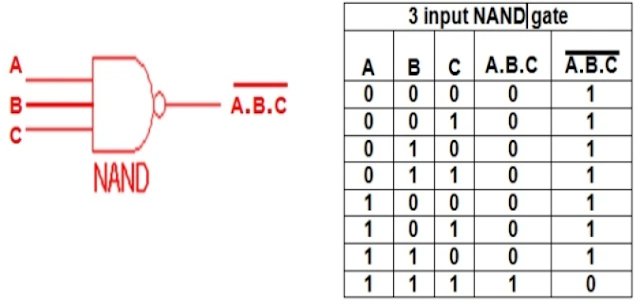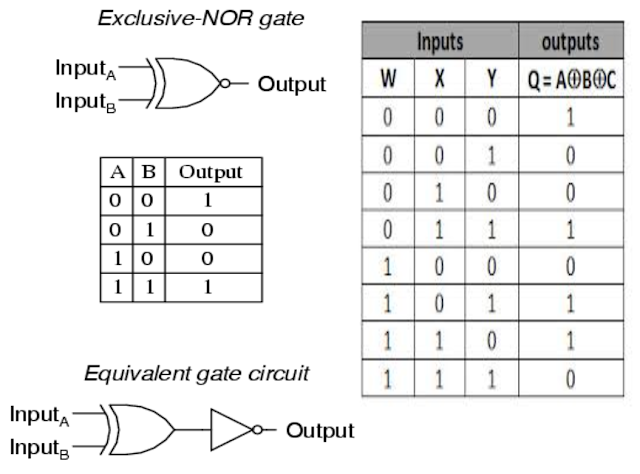1. NOR Gate
The NOR gate is a dc combination of OR gate with the not gate. The output of NOR gate is totally opposite of the output of the OR gate. In NOR gate, the output to be high (logic 1) if all the inputs are low (0); if one or all input is high (*1), a low output (0) result will display. The symbol is presented in the forms of a plus sign (+), with an overbar over the entire expression to indicate the inversion i.e y= A + B The NOR function can have any number of inputs, but practical commercial NOR gates are mostly limited to 2, 3, and 4 inputs. Symbol of NOR logic gates is as follows. |
| NOR Logic Gate |
2. NAND Logic Gates
The NAND gate implements the NAND function, which is exactly inverted from the AND function. This is a combination of NOT and AND function. We can use this gate with 2, 3, and more inputs. If both or all the inputs are logic high (1) signals then the output will be a logic low (0) and with either input at logic low (0) signals, then the output will be logic 1. The symbol and truth table are as follows. The circle at the output of the NAND gate denotes the logical inversion.
 |
| 3-Input NAND Gate |
3. XOR or Exclusive-OR Gate:
The Exclusive-OR or XOR function is an interesting and useful variation on the basic OR function. Verbally, it can be stated as, "Either A or B, but not both." The XOR gate produces a logic 1 output only if its two inputs are different. If the inputs are the same, the output is a logic 0.
The XOR symbol is a variation on the standard OR symbol. It consists of a plus (+) sign with a circle around it. The logic symbol, as shown here, is a variation on the standard OR symbol.
 |
| Exclusive OR Gate |
4. XNOR or Exclusive -NOR Gate
Exclusive NOR gate is opposite of XOR gate. It is a digital logic circuit with 2, 3 and more input and only one output just like as above. The output of an XNOR gate is high (1) when all of its inputs are high (1) or when all of its inputs are low (0), if some of its inputs are low (0), then the output of the XNOR gate is low (0). The truth table for an XNOR gate with two inputs appears to the right.
 |
| Exclusive NOR Gate |
Well, how you found this article, is it useful? I am sure this will help you more. If you want more information please let
I know through comments in the right below.
Subscribed to the My Computer Tutors for updates. I will keep updating to you with latest tutorials.




Comments
Post a Comment
Your comment will inspire me, Please leave your comment